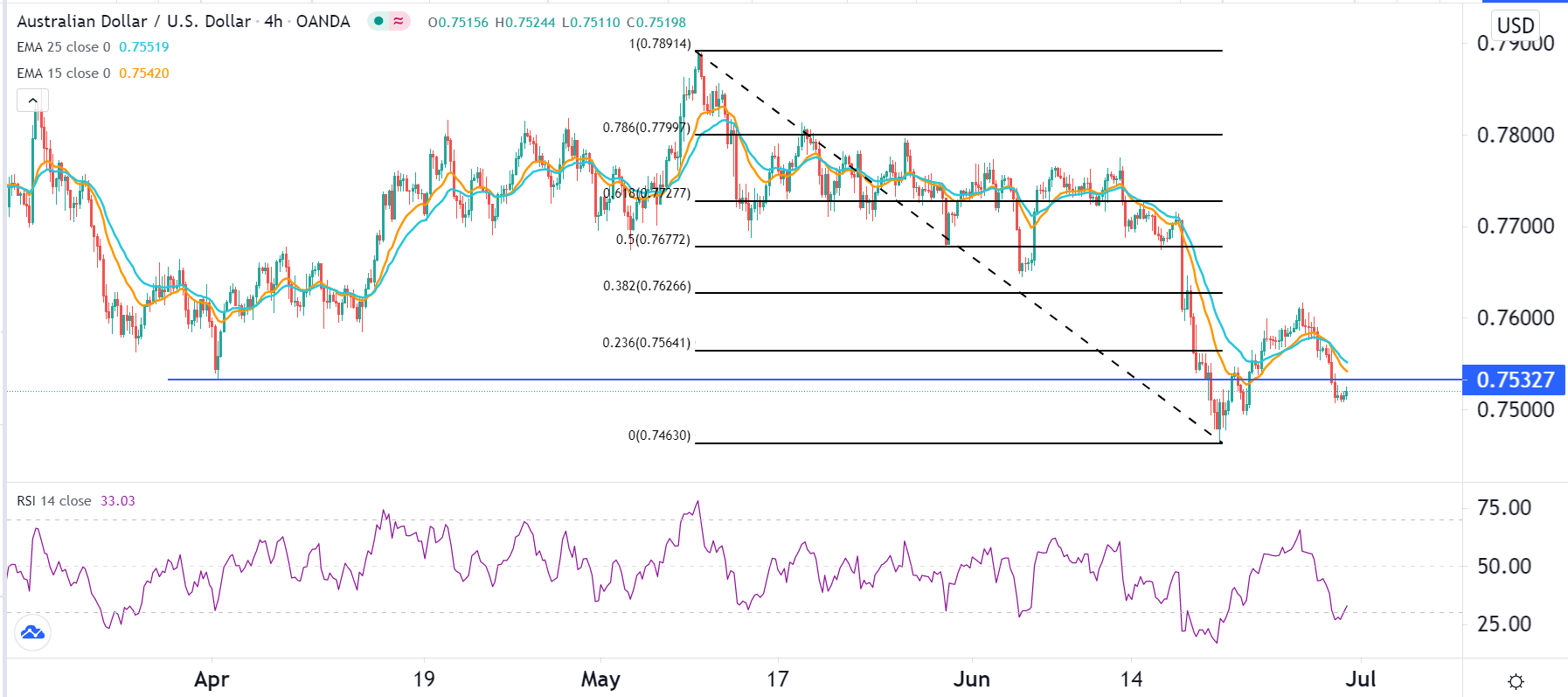Bearish Case
- Sell the AUD/USD and set a take-profit at 0.7450.
- Add a stop-loss at 0.7560.
- Timeline: 1-2 days.
Bullish Case
- Set a buy-stop at 0.7565 and a take-profit at 0.7650.
- Add a stop-loss at 0.7500.
The AUD/USD pair rose slightly in early trading after the relatively mixed economic data from Australia and China. The pair rose to 0.7523, which was a few pips above yesterday’s low at 0.7500.
Australia Credit Increase
The AUD/USD pair rose slightly after the relatively strong credit data published by the Reserve Bank of Australia (RBA). The data showed that the total credit rose from 0.3% in April to 0.4% in May. This strength was spread evenly across various segments.
Housing credit increased from 0.5% to 0.6% while personal credit rose from 0.0% to 0.2%. Similarly, business credit increased from -0.3% to 0.2%. The total credit rose by 1.9% on a year-on-year basis. The credit number provides an important signal to consumer and business consumption.
The AUD/USD is also rising after the relatively mild Chinese manufacturing and non-manufacturing data. The data showed that the Manufacturing PMI declined from 51.0 in May to 50.9 in June. This increase was better than the median estimate of 50.8. The Non-Manufacturing PMI declined from 55.2 to 53.5. Subsequently, the Composite PMI declined from 54.2 to 52.9. While these numbers declined, they are still above 50, meaning that business output in the country is improving. Markit will publish the latest Australian PMIs tomorrow.
The AUD/USD pair will later react to the latest US pending home sales numbers. The data are expected to show that sales declined by 0.8% in May after falling by 4.4% in the previous month. This decline will be because of the tightening housing sector. On Tuesday, data showed that the US House Price Index rose by 14.6% in April after rising by 13.3% in March. It was the highest figure in 30 years.
AUD/USD Technical Analysis
The pair is trading at 0.7523, which is slightly below the important resistance at 0.7532. This is important support since it was the lowest level on April 1. The pair has moved below the 25-day and 50-day exponential moving averages (EMA) on the four-hour chart. It has also dropped below the 23.6% Fibonacci retracement level while the Relative Strength Index (RSI) has moved to the oversold level of 30. Therefore, the pair will likely resume the downward trend as bears target the next key support at 0.7463.

